Vein problems are more common than artery problems—legs being the most common area for most people, affecting 27 percent of Americans. Vein problems progress with age, worsening during the peak of adulthood and becoming a reason for immobility.
In this article, we will explore this medical phenomenon and how it can potentially affect a person.
What Causes Vein Diseases?
Age is the most significant factor in developing vein diseases. A third of Americans over 45 years old have some kind of vein disease. Two of the most common issues are valve problems and blood clots.
Since veins are responsible for blood circulation, their duty includes pushing blood back to the heart, preventing it from flowing backward. If the veins get damaged, they will not “close,” and the blood can’t travel back to the heart to complete the process.
If it falls backward, the blood stagnates, pooling around the valve and raising the pressure in the vein. For people who rarely exercise, sit, or stand for long periods, the blood pressure falling back can damage their veins. Smokers are also at a greater risk for developing vein problems more than people who have no vices.
Improper blood flow results in blood clotting, either in a superficial or deep vein within the tissue. Blood clots can cause valve damage and increase the risks of other health problems if they end up bursting due to uncontrolled pressure.
- Varicose Veins
Varicose veins are the most common among all types of vein problems. It is affecting 20 to 25 million people worldwide. However, it is more common in women than in men. It manifests around the legs’ surface, causing the limbs to swell to the point that you can feel the veins on the surface of your skin.
For most people, they are common and are simply a cosmetic concern. It can become uncomfortable and unappealing. However, it is also a sign that the patient may be at greater risk for other heart-related problems. Varicose veins usually manifest after the veins fail or weaken.
- Spider Veins
On the other hand, spider veins are small, damaged veins that appear on either legs or face. They are also caused by the weakening of the valves or blood vessel walls, the same with varicose veins. However, if they manifest on the face, they are more likely to result from sun damage or increased facial pressure.
Spider veins can also be caused by certain factors, such as genetics, pregnancy, gender, age, weight, hormone, and lifestyle. However, it’s a less painful condition than varicose veins as the small veins do not bulge on the affected areas.
- Chronic Venous Insufficiency
Chronic venous insufficiency is when leg veins don’t allow blood to flow back up to the heart. In effect, it causes blood to pool in the legs. If not treated, it can cause pain, swelling, cramps, skin changes, varicose veins, and ulcers on the patient’s legs. Although it is not a severe health threat, it can still inflict discomfort on whoever has it.
Conclusion
Although vein problems are considered minor health conditions, they still can worsen and inflict life-threatening damage upon the person who has them. It’s essential to take the necessary precautions and steps after getting diagnosed with vein problems. Aside from taking anti-inflammatory medications to treat swelling and bulging veins, it’s crucial to supplement the medicine with a lifestyle change—lose weight, exercise, and move your feet and legs whenever possible.
Garden State Medical Group aims to save more than people’s lives. We specialize in primary care, cardiopulmonary, and radiology services. If you’re looking for a family doctor, or someone to take care of people you love around Florida, then we can take you in for a few tests. Visit our website to learn more about our services today.
